In this series of interviews, we ask art professionals about their jobs and career after graduation. We try to find out what the term “perfect job” means to them. No matter where you live, to find a job after a humanities degree is not an easy thing. This time we speak with Sergey Kantsedal (b. 1989, Ukraine) based in Turin. He is currently the curator of non-profit art organization Barriera and since 2017 he is the curatorial assistant of OGR YOU: Young Adults CLUB & TALKS, both in Turin. He tells us how his education prepared him for these jobs.
Profession: Curator of Barriera and the curatorial assistant of OGR YOU at OGR Officine Grandi Riparazioni.
Location: Turin, Italy
Dobromila Blaszczyk: What pushed you to become an art curator?
Sergey Kantsedal: I discovered contemporary art during my study at Kharkov Art Academy of Design and Arts in Ukraine. At that time my native city Kharkov was characterized by a vibrant art-scene with some of the most interesting Ukrainian artists of the young generation, so I become a frequent visitor of the local exhibitions, events and parties. Then I went to numerous studio visits where I had the opportunity to more deeply discover artistic practices and poetics — something that I become extremely fascinated with. As a cultural operator (at that time I didn’t’t perceive myself as a curator), I felt the necessity to support them – buying art works (for my personal collection), which in a situation of a total absence of an art market in my city was quite a significant gesture, much greater than having a conversation or giving some thoughtful feedback about their work.
Also, the simple act of being present, I felt that it mattered.
All these things helped establish long-term and even friendly relationships over time which transformed into professional collaborations: first on independent ground and later as a member of the curatorial team of YermilovCentre — center of contemporary art in Kharkov where I started to work after my graduation. It was my first real job in art and only after a certain time, when I became much more aware of my professional identity as a curator, its role and responsibilities, I realized that it was pretty much appropriate for my character. Not only intellectually, but also psychosomatically.
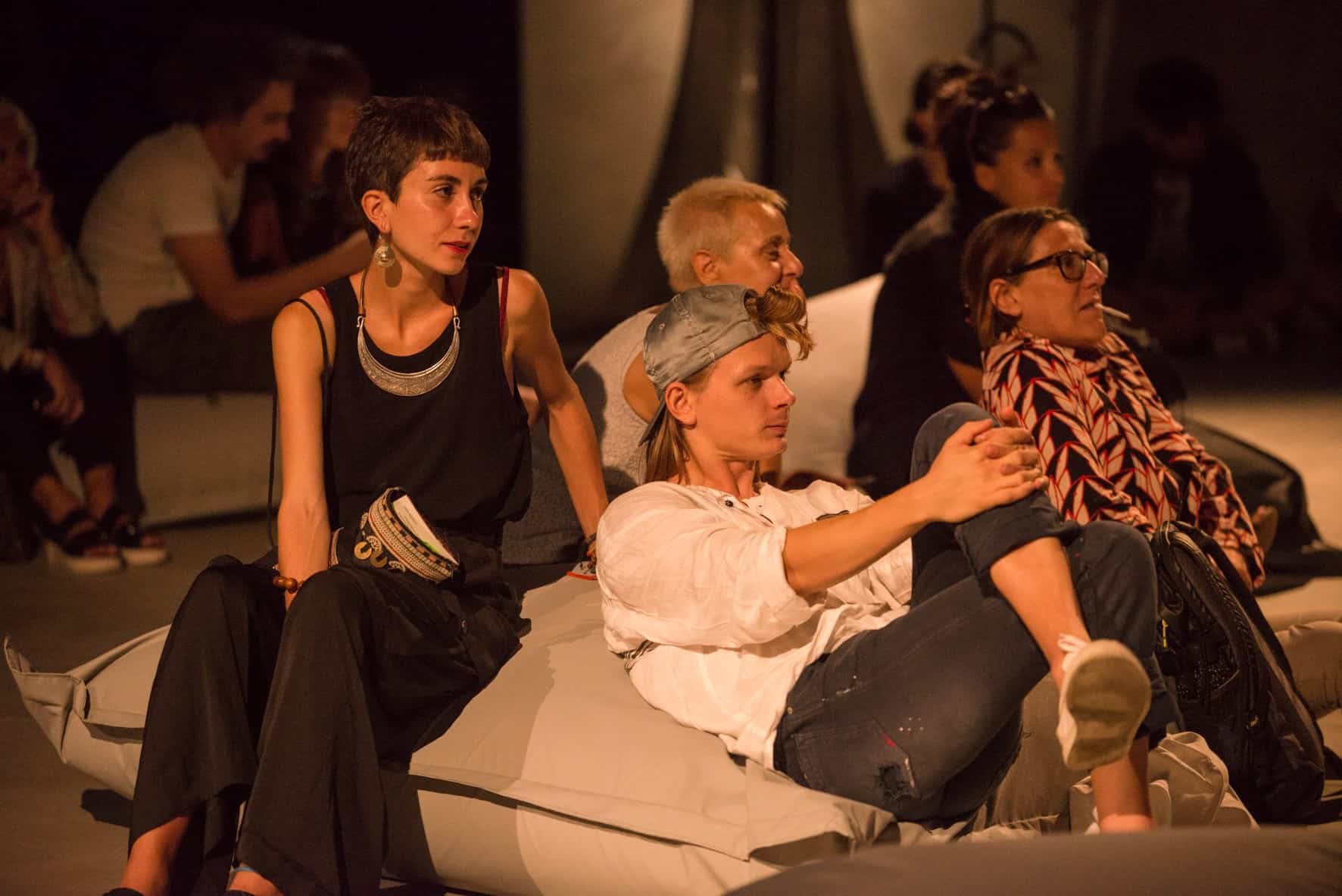
Sergey Kantsedal at OGR Officine Grandi Riparazioni in Turin, 2018. Photo by Domenico Conte.
DB: Could you describe your position, duties and responsibilities?
SK: Similar to many other curators, my practice is rather hybrid and it is a combination of several roles related to different art organisations in Turin. I am currently working as curator of Barriera, a non-profit space founded by a group of collectors and as curatorial assistant of OGR YOU — an experimental educational project for young adults within the branch of a public program at OGR Officine Grandi Riparazioni, a huge multipurpose cultural institution.
My duties vary significantly.
In the case of OGR I mainly support another curator in the realization of the project, in developing the content for the program, in the communication with beneficiaries, in the interaction with the guest artists; from the list of amazing artists we have collaborated with I could mention Angelo Plessas, Adam Christensen, Sophie Jung, Diego Marco, Elisa Giardina Papa, Eva and Franco Mattes, Slavs and Tatars etc. Through a series of workshops and lectures presented by invited artists twice a month at OGR a group of 15 young people selected through an open call were triggered to tell their individual stories and what goes on in their lives: both good and bad. This intensive program proved truly rewarding in showing what art and art related education programs could bring to youngsters in terms of an open minded perspective; it was also a great reward to see how much they can give back to other artists and the society. I can’t stress enough the need for more of such programs in art institutions – bringing a future generation closer to art, but also equipping them with critical and creative tools to navigate nuanced realities.
For already two years I have had the chance to work on this program together with the amazing Barbara Casavecchia, curator and art-critic based in Milan. Now we are almost ready to launch the new project called NOVA CONVENTION together with Guido Costa, curator and gallerist based in Turin. I can’t wait to start this experience by his side and I’m sure it will be an extraordinary year full of discoveries and stimulus.
Regarding my work in Barriera I am involved “three hundred and sixty degrees”, being completely responsible for the program of this organisation: from the talks and public events to the yearly exhibition series – Colazione a Barriera, from screenings and performances to the shows made by invited guest-curators etc.
DB: How has your education prepared you for your career?
SK: I have been living in Italy for five years and one of the reasons behind my decision to move abroad was exactly related to this. In Ukraine, where I was born and studied, art education is characterized by institutional inertia and a deeply conservative nature. Moreover, at that time there weren’t any opportunities in the field of curatorial studies. So speaking about education I would rather mention my postgraduate study CAMPO. Organised by Fondazione Sandretto Re Rebaudengo in Turin, this program combines a specialized theoretical course and traveling residency which included a series of study visits to the main art institutions, non-profit spaces, galleries and artist studios around the country I attended together with a group of enthusiastic future-to-be-curators. This experience not only helped me to improve some modes of curatorial profession as the very dynamic discipline based on specific knowledge, but also provided me with some very important skills for our relationship-buliding profession.
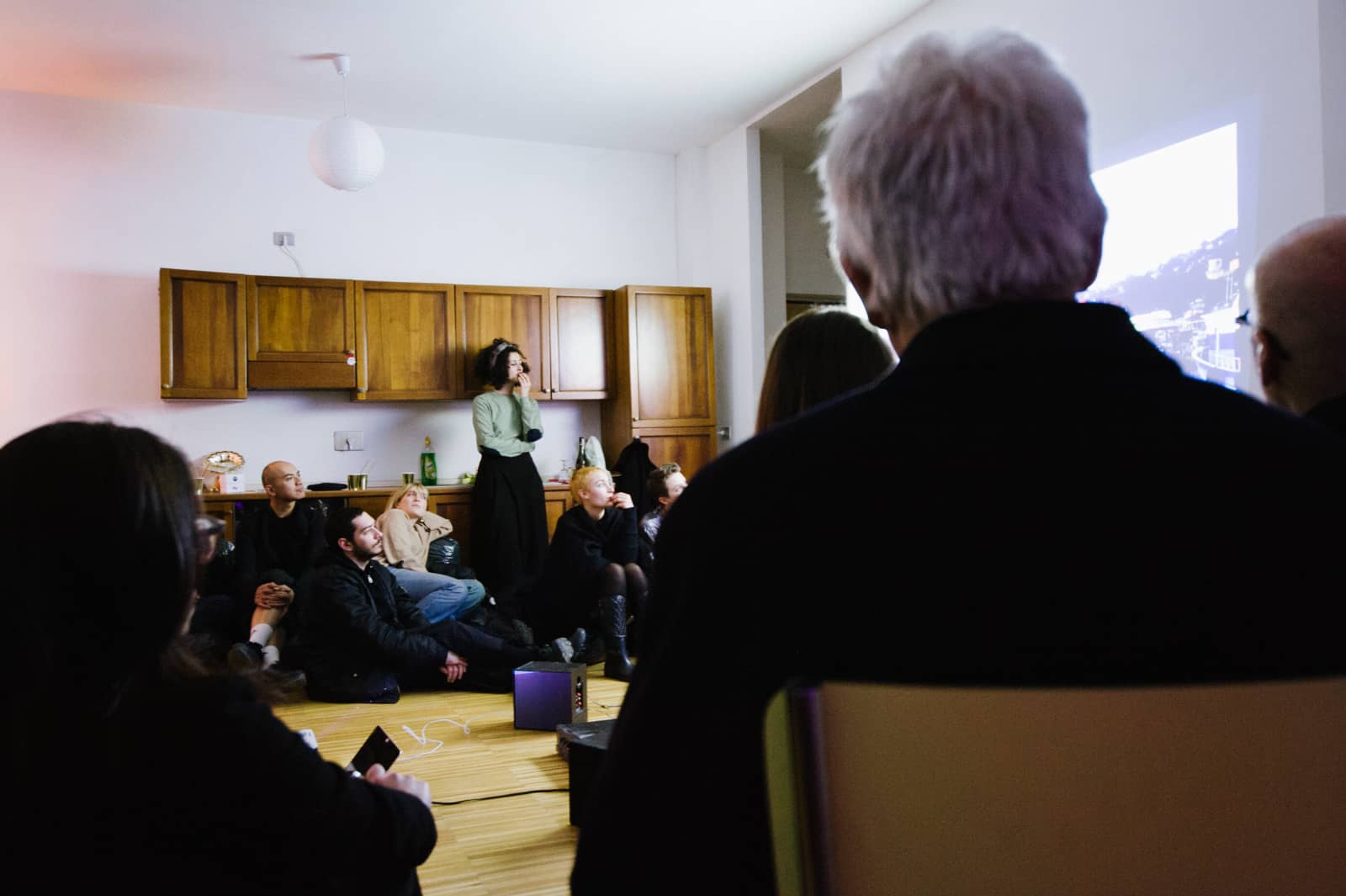
Screening by METASITU in Sergey’s private apartment, 2018. Photo by Cristina Leoncini
DB: What were your beginnings?
SK: The first exhibition I have ever worked on was the show I curated in 2011 in the exhibition space of Kharkiv Art Academy of Design and Arts by Ivan Svetlichniy and Vitali Kokhan. This show which included a wide range of artistic mediums — from painting to performance — was our way of critically confronting the policy of this space whose activity was mostly characterized by an orthodox curatorial approach. This occasional project transformed into a long-term collaboration which led to a collective residency at Cittadellarte-Fondazione Pistoletto in Biella, Italy in 2014. A year later we published a book called NODES — an unconventional attempt at creating a common biography based on non-linear narration and some materials drawing from our personal archives.
DB: What were the skills you had to learn and what was the most important skill which let you get this job?
SK: I can tell you about the circumstances that have triggered the beginning of my work at Barriera. In 2017 I was invited to curate an exhibition in this space. At that time this institution was in a period of transition, it was lacking not only vision and strategy, but also love and care. Together with Veronica Mazzucco, a young italian curator who I invited to collaborate, we decided to focus our research on discussions about the institution itself and its role within the very diverse context of it’s locale, considering that the space is situated in typical working class neighborhood of Turin. More than curating an exhibition in Barriera, we felt it was urgent to “curate” Barriera. As an institution, as a place, as a body. So, we imagined it as an individual that like any other needs love — to love and to be loved — in order to thrive. And to achieve this we proposed a series of physical and spiritual “therapeutic” actions in the form of four artistic interventions by Apparatus 22, Hannes Egger, Cose Cosmiche and Stefano Fiorina. The exhibition comprised of these four separate but interlocking actions that unfolded over a period of four weeks. We hoped that this unconventional exhibition format, would urge the institution to look at itself anew. That it would exit its daily routines, embrace new points of view and open itself up to the outside. In short, allow itself to be loved.
After this project, the members of Barriera proposed I curate the program full-time. So this occasional collaboration transformed in a long-term partnership allowing to continue develop my work there.
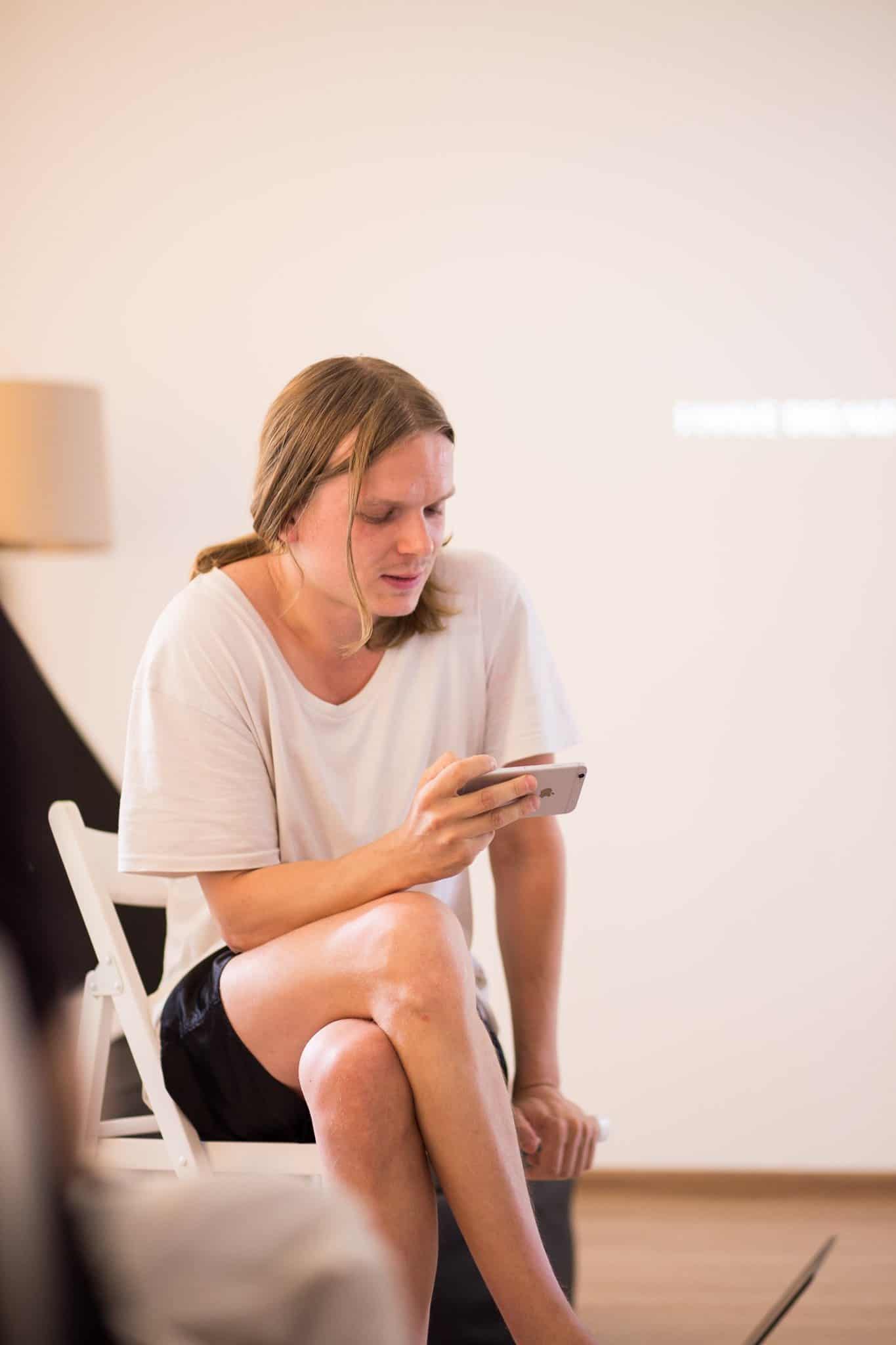
Curatorial talk within WE ARE NEVER ALONE residency program in Ukraine, 2019.
DB: What was the riskiest decision you had to take and what was the most difficult task for you so far?
SK: I think there aren’t many risky decisions to take if you are curator. At the end it’s about making art and not saving people’s lives (laughing).
Although curators could take more risks in terms of the ideas they vehiculate, the processes of reflection they like to put in motion with the exhibitions and projects.
DB: What do you consider your biggest success?
SK: It’s difficult to speak about my own curatorial work in terms of “success”, I would rather prefer to use the word “achievement”. Maybe it sounds a bit naive, but I think the biggest one is simply to do something I really love for a living. As rapper Guf puts it: “I love what I do, and I do what I can”.
I am very happy to be able to find a balance between the potential of institutional work within the four walls of the institutional space, with more adventurous forms of outdoor curating in my latest independent projects; experimenting with forms and methods of display: undertaking different methodologies and venues for artistic representation, not necessarily within a strictly institutional frame. These include commissioning a site-specific intervention in a bar of Turin – Isola, conceived by Ukrainian artist Apl315 both as an installation and one night tattoo session, curating “HOPE SANK TEETH INTO THE NIGHT” exhibition of transdisciplinary art collective Apparatus 22 in the iconic Kiyv club Closer, a show that scrutinized the emancipatory and utopian potential of the night time and clubbing.
I would also mention the manifold collaboration with Italian artist Franco Ariaudo that took many shapes over the last few years: the time we spent together in residency at Biruchiy island in Ukraine within Biruchiy Contemporary Art Project. The exhibition “Faster Than Christ” I curated at at Colli Independent Art Gallery in Rome, another one at The Naked Room in Kiyv, and series of pop-up exhibitions and presentations of the book “Basilisk or How To Run on Water” (published by Viaindustriae, 2018) we did in Turin.
These are just a few of the projects I am very happy with.
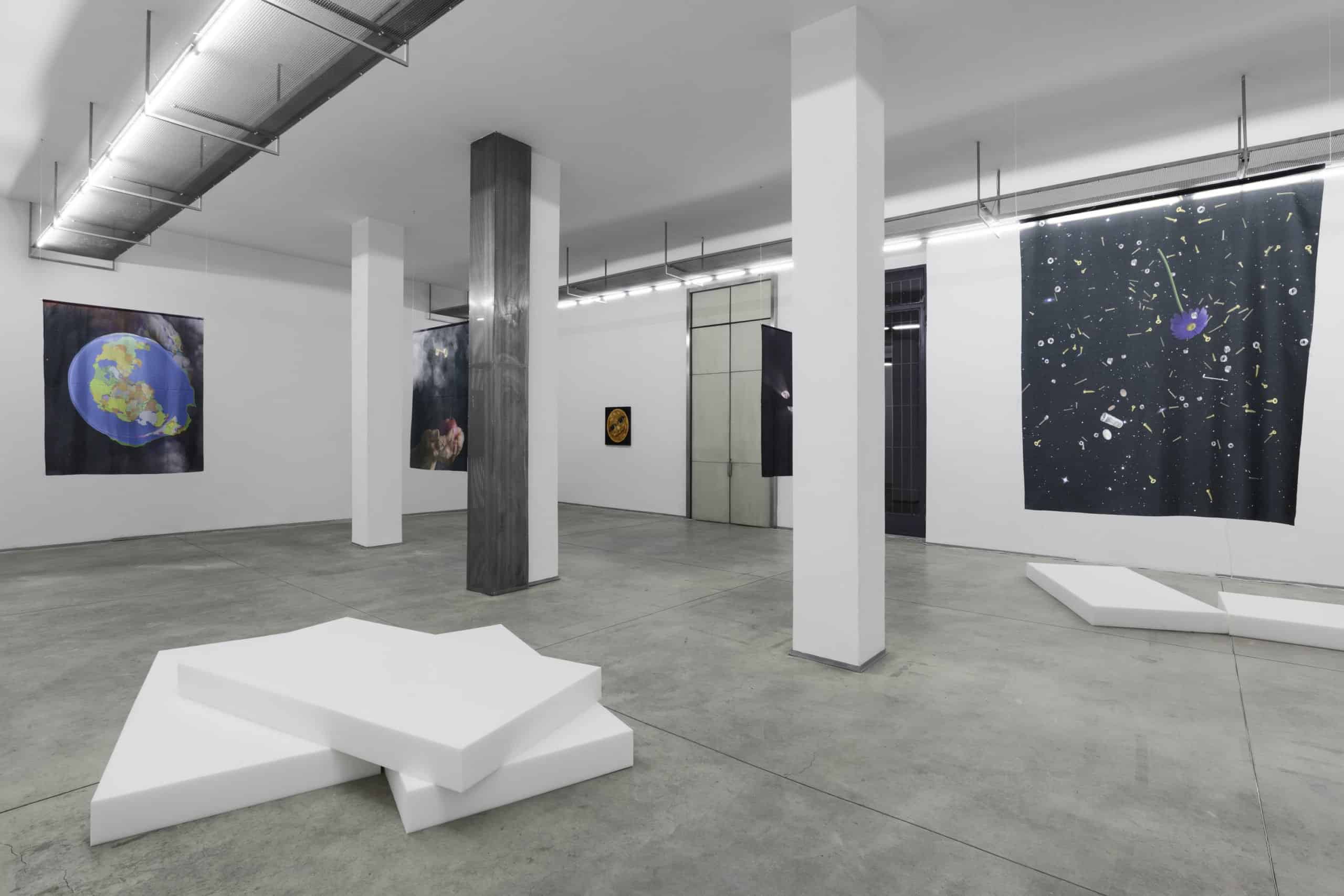
Exhibition by Agnieszka Polska at Barriera in Turin, 2019. Photo by Cristina Leonici
DB: What are three tips you would give someone who wants to start a career as a curator?
SK: I am not sure to be able to give any tips to anyone.
The only thing that I can say that in my personal work I am trying to be as sincere, genuine and generous as possible.
DB: Would you like to change something in your current role? Is being a curator your dream job or you are pursuing another goal?
SK: I am quite satisfied with my current role or maybe I am just not the super ambitious kind (laughing).
Well, I have many curatorial daydreams, so let’s see what the future will bring… for sure you have to be very patient, love art and artists and also be a really hard worker; and a drop of good luck is always a welcome bonus
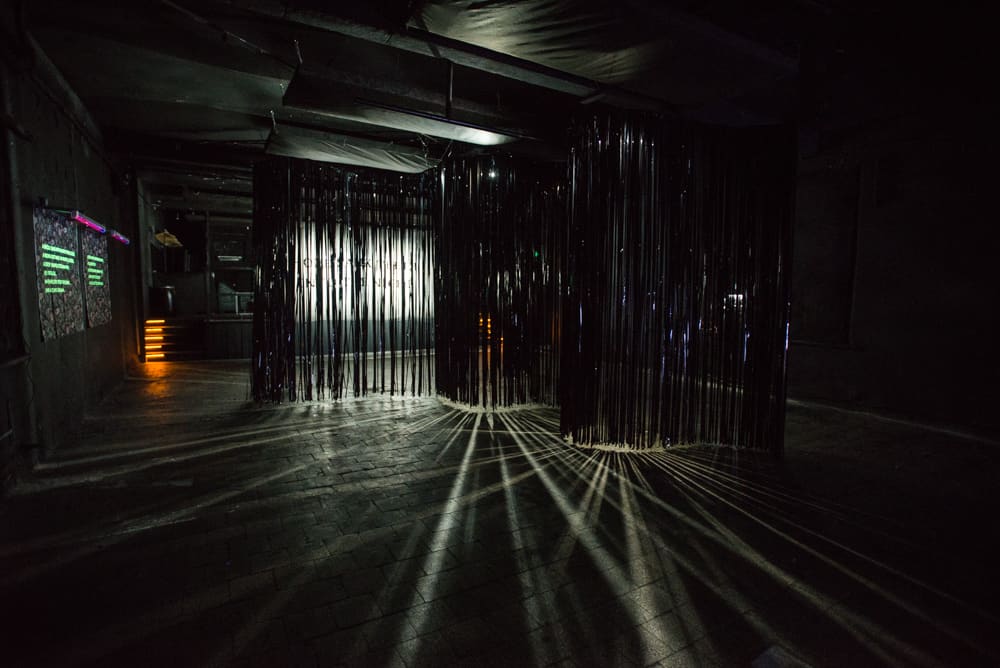
Exhibition HOPE SANK TEETH INTO THE NIGHT by Apparatus 22 at Closer Art Center in Kiyv, 2019.
Photo by Natalia Diachenko.
Alongside this interview we also run a Facebook Group “hARTS Jobs” where the arts community can share more opportunities and experiences.
The article was created thanks to the Arts Council Emergency Response Fund: for organisations (non NPO). Contemporary Lynx organisation is supported by Arts Council England.







